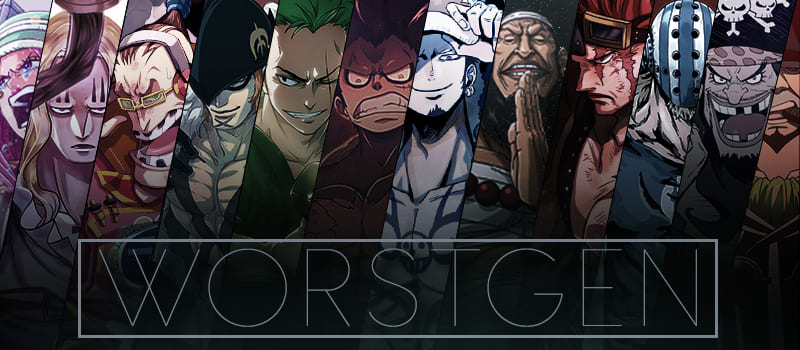@HerreraIsBack By the way, freedom of speech isn't libertinism. I'm all for censoring the dark triad of politics (Nazism, fascism, and communism).
@Uncle Van Olavo de Carvalho, Roger Scruton, Arnold Beichman and Trotsky—of all people—agree with me:
Fascism
Leftists use it as a slur against the right. But its real meaning is very different.
A type of totalitarianism, fascism arose out of the chaos that followed World War I (1914–18), when economic hardship, thwarted idealism, and bruised national pride combined to radicalize European politics. The fascist era in Europe is usually dated from 1922, when Mussolini came to power in Italy, to 1945, when Hitler’s Nazis were crushed at the end of World War II. But it was an international movement of somewhat longer duration, finding supporters throughout the European continent as well as in Britain, North America, and South America.
The word “fascism” was coined by Mussolini. It derives from the Latin
fasces, referring to the bundle of rods and projecting ax-head that in antiquity was carried before Roman consuls as a sign of state authority. The rods symbolized social unity; the executioner’s ax, firm political leadership. (Use of the fasces as a political symbol is not restricted to fascist parties: in America fasces adorn the wall behind the Speaker’s platform in the U.S. House of Representatives and are stamped on the so-called Mercury dime.)
As the British philosopher Roger Scruton has pointed out, fascism is characterized more by a common ethos than a consistent political philosophy. Nevertheless, around Italian fascism, German Nazism, and Spanish falangism clustered several distinctive traits. Fascist parties showed implacable hostility toward parliamentary democracy, egalitarianism, and the values of the liberal Enlightenment; and because fascists viewed the world as a Darwinistic jungle in which only the most militant could survive, they tolerated no domestic competition. To secure control of a people, fascists advocated one-party rule by an elite, the use of secret police to eliminate dissent, strict control over the media, and unquestioning obedience to a charismatic leader. To incite enthusiasm for their rule they made appeals to youth and promoted a cult of violence. Nazi calls for organic social harmony (in the name of
das Volk), militaristic chauvinism, and
Lebensraum (living space) appealed to the popular imagination as did the use of vivid symbols, torchlight parades, uniforms, and military discipline to express unity in a fragmented age.
Hitler’s Brown Shirts and to a lesser extent Mussolini’s Black Shirts added two further doctrines to these traits: a barely disguised hostility to Christianity, whose traditional forms they intended eventually to stamp out, and anti-Semitism, which led to the state-sponsored execution of between five and six million Jews.
Despite fascists’ harangues against democracy and egalitarian economic arrangements, they were able to win massive popular support in Europe before the 1940s, a fact that has vexed many students of the movement. Moreover, to the embarrassment of the avant garde, a number of modernists flirted with fascism at one time or another. In Britain, for example, Ezra Pound, George Bernard Shaw, William Butler Yeats, T. S. Eliot, and Wyndham Lewis were drawn to certain fascist ideas. Influential antimodernist Catholics such as G. K. Chesterton, Hilaire Belloc, and Roy Campbell were also receptive to fascist notions when the movement was still young. Indeed, for a brief time, fascism enjoyed a radical chic in British high society. But Eliot, Lewis, Chesterton, Belloc, Campbell, and others recoiled from
Il Duce and
Der Fuhrer when they recognized fascism’s nihilism and hostility to the West’s historical religions.
The fact is, fascism never took root on American soil and was never an attractive alternative to the right.
Scholars have long debated the extent to which fascism was the outgrowth of the left or right. Since the 1930s, Marxists, following Trotsky, have tried to make the case that fascism was the inevitable result of the structural crises that wracked latter-day monopoly capitalism. But even Trotsky himself recognized that “Stalinism and fascism, in spite of a deep difference in social foundations, are symmetrical phenomena. In many of their features they show a deadly similarity.” Another influential writer, the Hungarian-British writer and philosopher Arthur Koestler, abandoned the Communist Party in the late 1930s and traced the similarities between Stalinism and Nazism in novels such as
Darkness at Noon (1940) and
Arrival and Departure (1943)—“perhaps the best analyses of the totalitarian mind ever written,” according to Bernard Crick.
Indeed, many scholars see not just Stalinism but Marxist-Leninism as a totalitarian cousin to fascism. It would thus be misleading to place Marxism and fascism at opposite ends of the left–right political spectrum. Mussolini, after all, began his political career as a socialist, and his mature fascist doctrines bear the unmistakable stamp of Marx, Sorel, and Lenin. Other fascist leaders learned, in turn, from Mussolini: for Valois in France, Franco in Spain, Mosley in Britain, Degrelle in Belgium, Hitler in Germany, and their followers, “Nationalism plus Socialism equals Fascism,” a formula that reveals fascism’s affinity with the left. Even the word “Nazi” has a leftist connotation, derived as it is from the full party title, the National Socialist German Workers’ Party (Nationalsozialistische Deutsche Arbeiterpartei). Erik von Kuehnelt-Leddihn summarized the relationship between fascism and Marxist-Leninism by referring to them as “socialism national and international.”
The historian Stanley Payne wrote that fascism’s ties to the traditional right were frequently tenuous. In Europe, the marriage between fascists and conservatives during the 1920s and 1930s, when it occurred, tended to be one of convenience, not of love. Often such political alliances were forged to jettison indecisive liberal institutions and to combat what was perceived to be the common enemy—Bolshevism. The alliance was bound to be temporary once fascism’s full revolutionary agenda was revealed. One radical difference between fascists and traditionalist conservatives turned on religion. For the former, Christianity was anathema since it provided a source of moral criticism prior to and higher than the state; consequently, Nazi leaders wanted eventually to eradicate Christianity and replace it with a pagan pseudo-religion wholly subservient to the state.
There were pockets of fascist sympathy and collaboration in America prior to and during World War II, issuing mainly from anti-Semitic and extremist populist sentiment. Gerald L. K. Smith, Charles Eugene Bedaux, and T. Lothrop Stoddard were among the most prominent. Historians have also identified protofascist tendencies in politicians like Huey Long, who attempted to abolish the power of local government in Louisiana. Mistakenly, Charles A. Lindbergh’s antiwar speeches for the America First Committee were branded pro-Nazi, yet his goal was not to promote Hitler’s programs but to urge America to stay out of a costly European conflict: in this he was no different from countless American isolationists. The fact is, fascism never took root on American soil and was never an attractive alternative to the right. Its ethos was too alien to American political traditions and values to win wide support. The American Nazi Party, founded in 1958 by George Lincoln Rockwell, probably never numbered more than a hundred members at a time.
Unfortunately, the term “fascist” has been widely used by student radicals since the Vietnam War era to attack college administrators and (mostly Republican) politicians. But such use of the term is not only unfounded but irresponsible since it blunts our understanding of what fascism historically entailed.
https://modernagejournal.com/fascism/244521/
Fascism—an “Ism” of the Left, not the Right
The imminent arrival of American fascism is a favorite theme of American political scientists. Some even believe It Has Already Happened Here. For instance, this year’s American Political Science Association convention featured a panel discussion on the topic, “Is It Time to Call It Fascism?” I was not at the convention, but I would have relished the opportunity to have challenged the panel and Professor Dvora Yanow of California State University, Hayward, the panel chair, with a question of my own: “Is there a theoretical-definitional grounding to make the claim that the present U.S. administration is fascist, and is it useful, critically, to use that language at this point in time?”
First, fascism had its academic theoreticians but in fact fascism, as a concept, has no intellectual basis; its founders did not even pretend to have any. Adolf Hitler’s ravings in Mein Kampf, Giovanni Gentile’s hortatory article in the Italian Encyclopedia, Benito Mussolini’s boastful balcony speeches, all can be described, in the words of Roger Scruton, as “an amalgam of disparate conceptions.” It is about this “amalgam” that Professor Henry Ashby Turner Jr. has written:
Anyone who reads many studies of fascism as a multinational problem cannot but be struck by the frequency with which writers who begin by assuming they are dealing with a unitary phenomenon end up with several more or less discrete subcategories. Regardless of what criteria are applied, it seems very difficult to keep fascism from fragmenting. In spite of this, there has been a general reluctance to consider what must be regarded as a definite possibility: namely, that fascism as a generic concept has no validity and is without value for serious analytical purposes. . . . The generic term fascism is in origin neither analytical nor descriptive.
The Russian extremist politician Vladimir Zhirinovsky (whatever became of him?) was called a “fascist.” But as Professor James Gregor wrote, “In what sense Zhirinovsky is a fascist is difficult to say with any intellectual conviction.” Yet “fascism” still has meaning in democratic societies, as seen in the fracas a few years ago over Austria’s Joerg Haidar. Labeling someone you dislike a “fascist” is still a popular polemical sport: Call someone a Communist and proof is demanded; even with proof, you risk being called a red-baiter. Call someone a fascist and that’s enough to convict.
In the lexicon of the left, there is nothing lower than a red-baiter but there is no such person as a “fascist-baiter.” We’ve all heard about “anti-communist hysteria,” especially during the McCarthy era, but there is no such thing as “anti-fascist hysteria.” The name-calling got a little ridiculous when in the 1969 Sino-Soviet split, Moscow and Beijing called each other fascist.
Having combed their literature, Professor Gregor has shown beyond a shadow of doubt the affinities, too long ignored, between fascism and Marxism-Leninism. (It was Don Luigi Sturzo who provided the reductio ad absurdum: Fascism was black communism and communism was red fascism.)
Richard Pipes has written that “Bolshevism and fascism were heresies of socialism.” Recalling that Mussolini began his political career as a distinguished Italian socialist, Professor Gregor writes: “Fascism’s most direct ideological inspiration came from the collateral influence of Italy’s most radical ‘subversives’—the Marxists of revolutionary syndicalism.”
Even Nikolai Bukharin, the leading Soviet ideologist purged by Joseph Stalin, began to have misgivings about the Revolution and to allude to the emerging system’s fascist features. Says Professor Gregor: “By the early 1930s, the ‘convergence’ of fascism and Stalinism struck Marxists and non-Marxists alike. . . . By the mid-1930s, even Trotsky could insist that ‘Stalinism and fascism, in spite of deep difference in social foundations, are symmetrical phenomena.’ . . . Fascist theoreticians pointed out that the organization of Soviet society, with its inculcation of an ethic of military obedience, self-sacrifice and heroism, totalitarian regulation of public life, party-dominant hierarchical stratification all under the dominance of the inerrant state, corresponded in form, to the requirements of fascist doctrine.”
Left liberals have never dared face the fact that Marxism-Leninism and fascism, V. I. Lenin and Mussolini had a common origin.
https://www.hoover.org/research/fascism-ism-left-not-right
What's fascism?
Olavo de Carvalho
The Globe, the 8 July 2000
Benito Mussolini summed up the fascist doctrine in a concise rule: “Everything for the State, nothing against the State, nothing outside the State.” In Brazil, if you are against this idea, if you are in favor of private initiative and individual freedoms, then an academic chimpanzee appears who draws from it the splendid conclusion that you are Benito Mussolini in person. And do not fall into the imprudence of imagining that this conversation is too puerile to fool the rest of the overalls. When you least expect it, squeaks of civic hatred rise from the audience, and a fleet of tamarins, lemurs, baboons, orangutans and capuchin monkeys rush upon you, to bite, firmly convinced that they are destroying, for the sake of simian humanity, a dangerous fascist. Beware, then, of what you say out there.You have no idea of the intellectual authority of chimpanzees in the land of the lion tamarin.
In fact, the official idea of “fascism” that is transmitted in our schools has nothing to do with the phenomenon that in historical science bears this name. It is a faithful, devout and literal repetition of the propaganda formulas devised by Stalin in the late 30s to hastily erase the common root of the two great revolutionary movements of the century and throw to oblivion the universal bad impression left by the German-Soviet pact. In this version, fascism and Nazism emerged as far-right “movements”, created by “big capital” to save “in extremis” agonizing capitalism. It is beautiful to imagine those Jewish bankers from Berlin, gathered in medical commission around the bed of the dying regime, until one of them occurs the genius solution: “It is soft, class. We invent the far rightit sends us to the concentration camp, and that's it: capitalism is saved.”
However, the origins and nature of fascism are no mystery to anyone who is willing to trace them in authentic history books.
All the ideologies and mass movements of the last two centuries were born of the French Revolution. They were born of her and none against her. The revolutionary currents were substantially three: the liberal, interested in consolidating new civil and political rights, the socialist, aiming to extend the revolution to the social-economic field, the nationalist, dreaming of a new type of social link that would replace the former loyalty of the subjects to the king and eventually finding it in the “national identity” in the almost animistic feeling of solidary union founded on the unity of race, language, culture, territory. The synthesis of the three was summarized in the motto: Freedom-Equality-Fraternity.
The egalitarian conjuration of Babeuf and its crushing marked the rupture between the first two ideals, heralding two hundred years of competition between capitalist revolution and communist revolution. Let each accuse the other of reactionary, nothing more natural: in the power struggle between revolutionaries, the one who best manages to clean his image of all contamination with the memory of the “Ancien Regime” wins. But in order to cleanse oneself of the past one must soil it, and in this the propagandists on both sides concur with overflowing creativity: the lands of the Church, the guarantee of the subsistence of the poor, become retroactively heinous feudal exploitation; the general French prosperity, the immediate cause of the social rise of the bourgeois, becomes the myth of the growing misery that would have produced the insurrection of the poor;the expoliation of the petty proprietors by the new class of bureaucrats who had replaced the local administrations (and who joined the revolution en masse) becomes a crime of the feudal lords. The popular image of the Revolution is still largely based on these gross lies, to whose credibility contributed the fact that they were simultaneously proclaimed by two enemy parties.
The third faction, nationalist, begins to embody almost monopolistically the revolutionary spirit in the phase of the struggle for national and colonial independence (Brazil was born from this). The partnership with the other two gradually turns into open competition and hostility, encouraged here and there by the occasional alliances between the nationalist revolutionaries and the local monarchs dethroned by the Napoleonic empire.
By the end of the XIX century, the liberal revolutions had ended, the liberal regimes entered the phase of peaceful modernization. Triumphant liberalism could now reabsorb religious and moral values surviving from the old regime, rendered harmless by the suppression of its social and economic foundations. He no longer bothered to personify the “right” in the eyes of the two revolutionary competitors, renamed “soviet communism” and “nazifascism”. Thus began the death struggle between the socialist revolution and the nationalist revolution, each accusing the other of complicity with the liberal “reaction”.
That's history. The reader is free to try to orient himself between the data, always complex and ambiguous, of historical reality, or to opt for the mutilating simplifications. The first option will make him a bore, a perverse, an authoritarian, always demanding that opinions, these fluttering creatures of human freedom, be tied with chains of lead to the gray ground of facts. The second option will have the advantage of making you a friendly and communicative person, well accepted as an equal in the chatty and bouncy community of academic apes.
On July 8, 2000 /
Articles
Tags:
2000,
Fraternity,
Equality,
freedom,
The Globe
https://olavodecarvalho.org/que-e-o-fascismo/
This chart here makes it clear fascism, nazism and comunnism have more in common with each other than capitalism and right wing ideology:
https://www.history.navy.mil/content/dam/museums/hrnm/Education/EducationWebsiteRebuild/RussianPropagandaAboutGermany/Socialism, Fascism, Capitalism, Communism Background.pdf
@Logiko Congratulations, Harry. You have been the fascist all along! Not only that, but you also side with Terrorists, be they fundamentalist muslims, drug dealers or communist insurgents.








